- Clone
- 1F4 (See other available formats)
- Regulatory Status
- RUO
- Other Names
- T cell antigen receptor complex, T3
- Isotype
- Mouse IgM, κ
- Ave. Rating
- Submit a Review
- Product Citations
- 1 publications
| Cat # | Size | Price | Quantity Check Availability | Save | ||
|---|---|---|---|---|---|---|
| 201415 | 100 µg | 216€ | ||||
| 201416 | 1 mg | 542€ | ||||
CD3 is a complex composed of δ, γ, ε, and ζ chains. They are 20-25 kD members of the immunoglobulin superfamily and associated with the T cell receptor (TCR). CD3 is expressed on thymocytes, peripheral T cells, some NK-T cells, and dendritic epidermal T cells. CD3 is involved in antigen recognition, signal transduction, and T cell activation.
Product DetailsProduct Details
- Verified Reactivity
- Rat
- Antibody Type
- Monoclonal
- Host Species
- Mouse
- Immunogen
- F344 rat spleen cells stimulated with PMA and calcium ionophore
- Formulation
- 0.2 µm filtered in phosphate-buffered solution, pH 7.2, containing no preservative.
- Endotoxin Level
- Less than 0.01 EU/µg of the protein (< 0.001 ng/µg of the protein) as determined by the LAL test.
- Preparation
- The Ultra-LEAF™ (Low Endotoxin, Azide-Free) antibody was purified by affinity chromatography.
- Concentration
- The antibody is bottled at the concentration indicated on the vial, typically between 2 mg/mL and 3 mg/mL. Older lots may have also been bottled at 1 mg/mL. To obtain lot-specific concentration and expiration, please enter the lot number in our Certificate of Analysis online tool.
- Storage & Handling
- The antibody solution should be stored undiluted between 2°C and 8°C. This Ultra-LEAF™ solution contains no preservative; handle under aseptic conditions.
- Application
-
FC - Quality tested
IHC-F - Reported in the literature, not verified in house - Recommended Usage
-
Each lot of this antibody is quality control tested by immunofluorescent staining with flow cytometric analysis. For flow cytometric staining, the suggested use of this reagent is ≤ 0.25 µg per million cells in 100 µL volume. It is recommended that the reagent be titrated for optimal performance for each application.
- Application Notes
-
Immobilized 1F4 antibody can induce T cell proliferation in vitro. Additional reported applications (for relevant formats of this clone) include: immunohistochemistry of acetone-fixed frozen sections1 and formaldehyde- fixed paraffin embedded sections4,5 immunofluorescence microscopy3, in vivo activation of T cell responses1, and in vivo inhibition of T cell responses2.
- Application References
-
- Tanaka T, et al. 1989. J. Immunol. 142:2791. (Activ, IHC, IP)
- Nicholls MR, et al. 1993. Transplantation 55:459. (Block)
- Elbe A, et al. 1993. J. Invest. Dermatol. 102:74. (IF)
- Baba T, et al. 2006. Blood 107:2004. (IHC)
- Fujishiro J, et al. 2010. Am. J. Transplant. 10:1545-55. (IHC-P)
- Li X, et al. 2009. J. Immunol. 183:3955. (FC) PubMed
- Product Citations
-
- RRID
-
AB_2860751 (BioLegend Cat. No. 201415)
AB_2860752 (BioLegend Cat. No. 201416)
Antigen Details
- Structure
- Ig superfamily, approximately 20-25 kD
- Distribution
-
Thymocytes, peripheral T cells, dendritic epidermal T cells, NK-T cells
- Function
- Antigen recognition, TCR signal transduction, T cell activation
- Ligand/Receptor
- Peptide antigen/MHC complex
- Cell Type
- NKT cells, T cells, Thymocytes
- Biology Area
- Immunology
- Molecular Family
- CD Molecules
- Antigen References
-
1. Tanaka T, et al. 1989 J. Immunol. 142:2791.
2. Elbe A, et al. 1993. J. Invest. Dermatol. 102:74. - Gene ID
- 25710 View all products for this Gene ID 300678 View all products for this Gene ID 315609 View all products for this Gene ID 25300 View all products for this Gene ID
- UniProt
- View information about CD3 on UniProt.org
Related FAQs
- Do you guarantee that your antibodies are totally pathogen free?
-
BioLegend does not test for pathogens in-house aside from the GoInVivo™ product line. However, upon request, this can be tested on a custom basis with an outside, independent laboratory.
- Does BioLegend test each Ultra-LEAF™ antibody by functional assay?
-
No, BioLegend does not test Ultra-LEAF™ antibodies by functional assays unless otherwise indicated. Due to the possible complexities and variations of uses of biofunctional antibodies in different assays and because of the large product portfolio, BioLegend does not currently perform functional assays as a routine QC for the antibodies. However, we do provide references in which the antibodies were used for functional assays and we do perform QC to verify the specificity and quality of the antibody based on our strict specification criteria.
- Does BioLegend test each Ultra-LEAF™ antibody for potential pathogens?
-
No, BioLegend does not test for pathogens in-house unless otherwise indicated. However, we can recommend an outside vendor to perform this testing as needed.
- Have you tested this Ultra-LEAF™ antibody for in vivo or in vitro applications?
-
We don't test our antibodies for in vivo or in vitro applications unless otherwise indicated. Depending on the product, the TDS may describe literature supporting usage of a particular product for bioassay. It may be best to further consult the literature to find clone specific information.
Other Formats
View All CD3 Reagents Request Custom Conjugation| Description | Clone | Applications |
|---|---|---|
| Purified anti-rat CD3 | 1F4 | FC,IHC-F |
| FITC anti-rat CD3 | 1F4 | FC |
| PE anti-rat CD3 | 1F4 | FC |
| Alexa Fluor® 488 anti-rat CD3 | 1F4 | FC,IHC-F |
| Alexa Fluor® 647 anti-rat CD3 | 1F4 | FC,IHC-F |
| APC anti-rat CD3 | 1F4 | FC |
| Ultra-LEAF™ Purified anti-rat CD3 | 1F4 | FC,IHC-F |
| PerCP/Cyanine5.5 anti-rat CD3 | 1F4 | FC |
| PE/Cyanine5 anti-rat CD3 | 1F4 | FC |
| PE/Cyanine7 anti-rat CD3 | 1F4 | FC |
| Spark Violet™ 423 anti-rat CD3 | 1F4 | FC |
Compare Data Across All Formats
This data display is provided for general comparisons between formats.
Your actual data may vary due to variations in samples, target cells, instruments and their settings, staining conditions, and other factors.
If you need assistance with selecting the best format contact our expert technical support team.
-
Purified anti-rat CD3
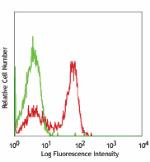
LOU rat splenocytes stained with purified 1F4, followed by a... -
FITC anti-rat CD3
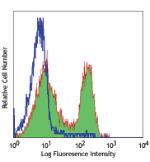
LOU rat splenocytes stained with 1F4 FITC -
PE anti-rat CD3
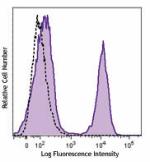
Lewis rat splenocytes were stained with CD3 (clone 1F4) PE (... -
Alexa Fluor® 488 anti-rat CD3
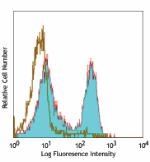
LOU rat splenocytes stained with 1F4 Alexa Fluor® 488 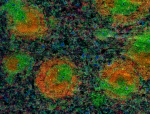
Rat frozen spleen section was fixed with 4% paraformaldehyde... -
Alexa Fluor® 647 anti-rat CD3
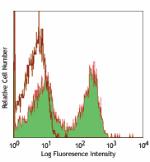
LOU rat splenocytes stained with 1F4 Alexa Fluor® 647 
Rat frozen spleen section was fixed with 4% paraformaldehyde... -
APC anti-rat CD3
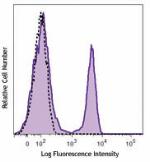
Lewis rat splenocytes were stained with CD3 (clone 1F4) APC ... -
Ultra-LEAF™ Purified anti-rat CD3
-
PerCP/Cyanine5.5 anti-rat CD3

Lewis rat splenocytes were stained with CD3 (clone 1F4) Per... -
PE/Cyanine5 anti-rat CD3

Lewis rat splenocytes were stained with anti-rat CD3 (clone ... -
PE/Cyanine7 anti-rat CD3
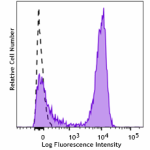
Lewis rat splenocytes were stained with anti-rat CD3 (clone ... -
Spark Violet™ 423 anti-rat CD3
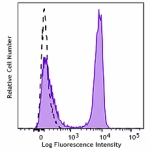
Lewis rat splenocytes were stained with anti-rat CD3 (clone ...

 Login / Register
Login / Register 












Follow Us